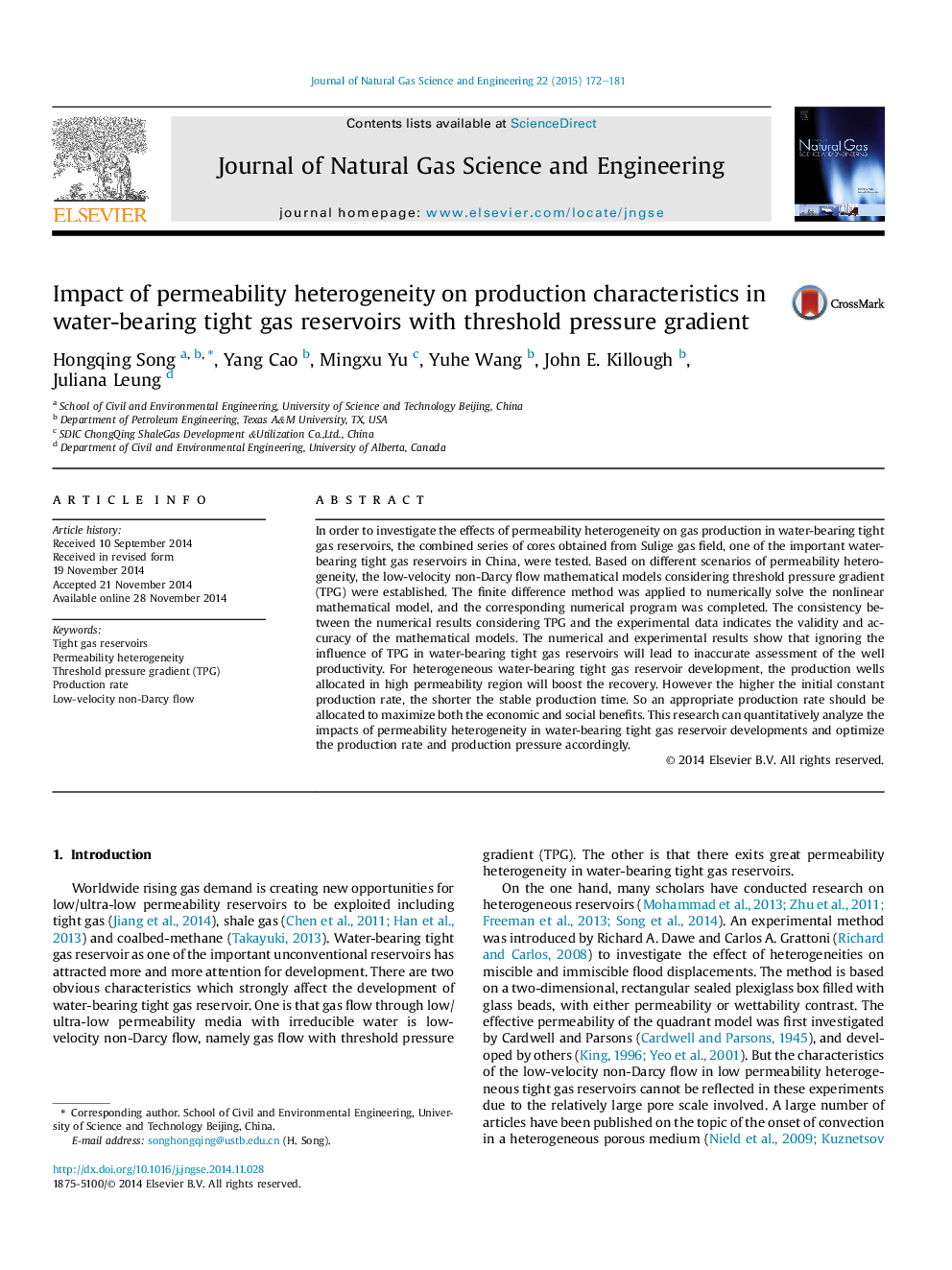| Article ID | Journal | Published Year | Pages | File Type |
|---|---|---|---|---|
| 1757801 | Journal of Natural Gas Science and Engineering | 2015 | 10 Pages |
•The combined series of different permeability cores were tested.•The low-velocity non-Darcy mathematical models considering permeability heterogeneity were established.•The finite difference method was applied to numerically solve the nonlinear mathematical model.•Effects of permeability heterogeneity in water-bearing tight gas reservoirs were analyzed.
In order to investigate the effects of permeability heterogeneity on gas production in water-bearing tight gas reservoirs, the combined series of cores obtained from Sulige gas field, one of the important water-bearing tight gas reservoirs in China, were tested. Based on different scenarios of permeability heterogeneity, the low-velocity non-Darcy flow mathematical models considering threshold pressure gradient (TPG) were established. The finite difference method was applied to numerically solve the nonlinear mathematical model, and the corresponding numerical program was completed. The consistency between the numerical results considering TPG and the experimental data indicates the validity and accuracy of the mathematical models. The numerical and experimental results show that ignoring the influence of TPG in water-bearing tight gas reservoirs will lead to inaccurate assessment of the well productivity. For heterogeneous water-bearing tight gas reservoir development, the production wells allocated in high permeability region will boost the recovery. However the higher the initial constant production rate, the shorter the stable production time. So an appropriate production rate should be allocated to maximize both the economic and social benefits. This research can quantitatively analyze the impacts of permeability heterogeneity in water-bearing tight gas reservoir developments and optimize the production rate and production pressure accordingly.
